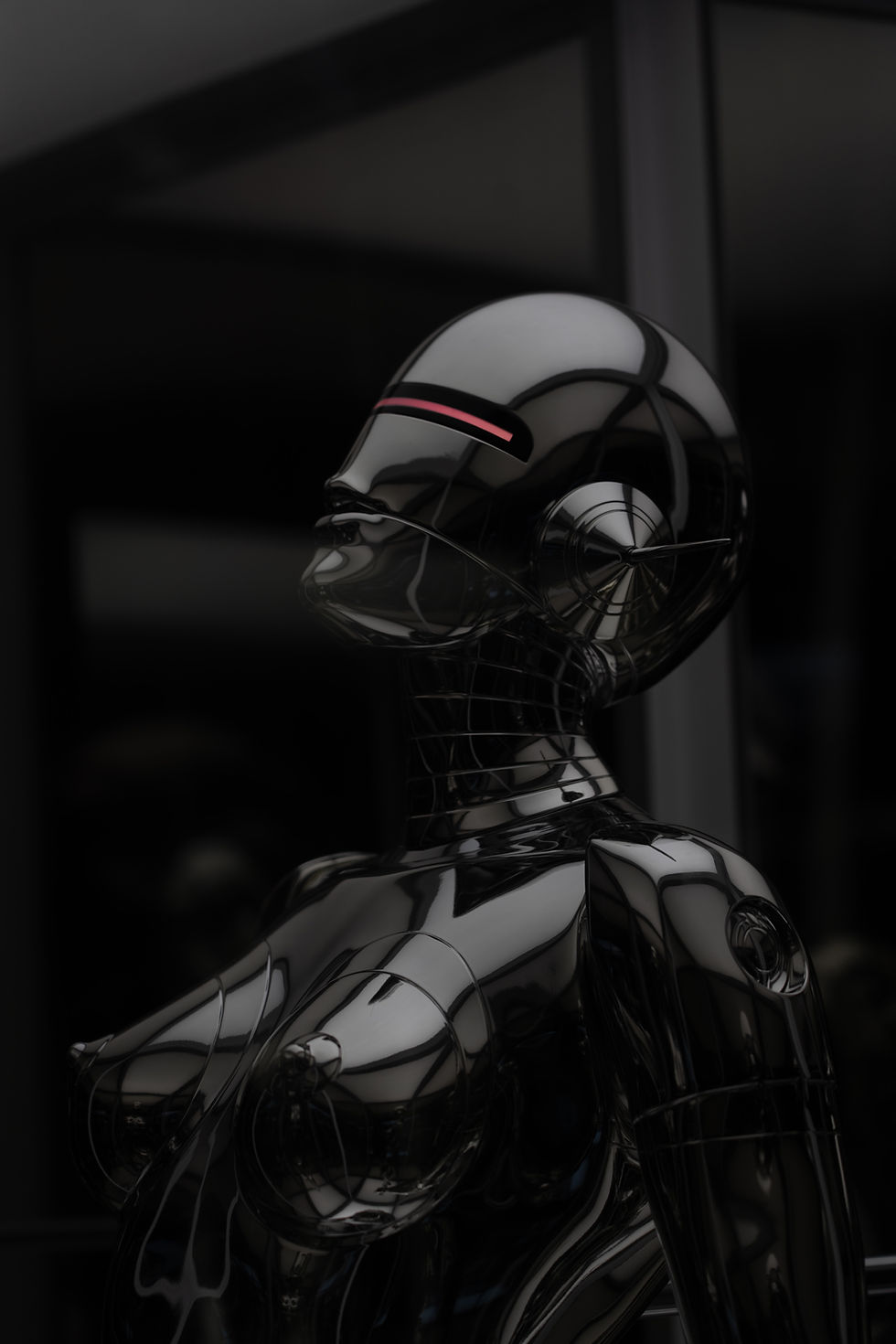Automation and AI: Job Killer or Job Creator?
- The X Course

- Sep 2, 2024
- 4 min read
Updated: Oct 1, 2024

The rise of automation and artificial intelligence (AI) has been a hot topic of discussion for years, sparking debates about the future of work. Many fear that these technologies will lead to widespread job losses, while others believe they will create new opportunities and drive economic growth. So, will automation and AI ultimately reduce or increase jobs? Let's dive into this complex issue and explore the potential implications.
The Fear of Job Displacement
The most common concern about automation and AI is that they will replace human workers with machines. As these technologies become more advanced, they can perform tasks that were once thought to be exclusively human, such as driving cars, diagnosing diseases, and even writing creative content. This has led to fears of mass unemployment and economic instability.
Examples of tasks that could be automated:
Manufacturing: Assembly line tasks, quality control inspections
Transportation: Driving trucks, buses, and taxis
Customer service: Answering phone calls, responding to emails
Data entry: Processing paperwork, entering data into spreadsheets
Accounting: Preparing financial statements, reconciling accounts
The Potential for Job Creation
While it's true that automation and AI can displace workers in certain industries, they can also create new jobs and opportunities. As these technologies become more widespread, there will be a growing need for skilled workers to develop, implement, and maintain them.
This could lead to a surge in demand for jobs in fields such as:
Artificial intelligence: Data scientists, machine learning engineers, AI researchers
Automation: Robotics engineers, automation specialists, process engineers
Technology: Software developers, cybersecurity experts, IT infrastructure specialists
Education: Teachers, trainers, and curriculum developers to help workers adapt to the changing job market
Examples of new jobs created by automation and AI:
AI trainers: Teaching AI systems to perform specific tasks
Data curators: Collecting, cleaning, and preparing data for AI algorithms
Ethical AI specialists: Ensuring that AI systems are developed and used responsibly
Automation consultants: Helping businesses implement automation solutions
The Impact on Different Industries
The impact of automation and AI will vary significantly across different industries. Some industries, such as manufacturing and transportation, are likely to experience significant job losses due to automation. Other industries, such as healthcare and finance, may see a net increase in jobs as AI is used to enhance productivity and improve decision-making.
Industries most likely to be affected by automation:
Manufacturing: Assembly line workers, factory operators
Transportation: Truck drivers, taxi drivers, delivery workers
Retail: Cashiers, customer service representatives
Agriculture: Farm workers, agricultural laborers
Industries that may benefit from automation and AI:
Healthcare: Doctors, nurses, medical researchers
Finance: Financial analysts, investment bankers, risk managers
Education: Teachers, professors, educational administrators
Creative industries: Artists, writers, musicians
The Role of Government and Education
Governments and educational institutions have a crucial role to play in mitigating the negative impacts of automation and AI. Governments can provide support to workers who lose their jobs due to automation, as well as invest in training and education programs to help people acquire the skills needed for the new economy. Educational institutions can also play a vital role by adapting their curricula to meet the needs of the changing job market.
Government initiatives to address the impact of automation and AI:
Job training and retraining programs: Helping workers acquire new skills
Income support for displaced workers: Providing financial assistance
Investment in research and development: Supporting the development of new
technologies
Regulation of AI: Ensuring that AI is developed and used responsibly
Educational initiatives to prepare students for the future of work:
STEM education: Encouraging students to study science, technology, engineering, and mathematics
Lifelong learning: Promoting continuous learning and skill development
Entrepreneurship education: Teaching students how to start and run their own businesses
Ethical AI education: Educating students about the ethical implications of AI
The Future of Work
It's clear that automation and AI will have a profound impact on the future of work. While there is a risk of job losses, there is also the potential for significant job creation and economic growth. The key to navigating this transition will be to invest in education and training, support displaced workers, and ensure that the benefits of automation and AI are distributed fairly.
Key takeaways:
Automation and AI have the potential to both reduce and increase jobs.
The impact of automation and AI will vary significantly across different industries.
Governments and educational institutions have a crucial role to play in mitigating the negative impacts of automation and AI.
The future of work will be shaped by the decisions we make today.
As we continue to develop and implement automation and AI technologies, it's essential to approach this transformation with a focus on human well-being and economic prosperity. By working together, we can ensure that the benefits of these technologies are shared by all.






Comments